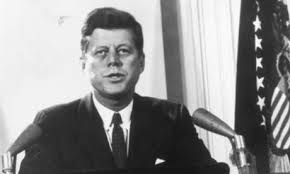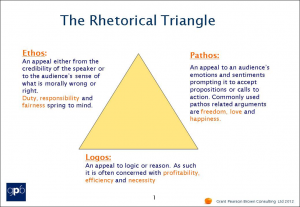Obama at the Gate
On 19th June, President Barak Obama was back orating in Berlin, five years after his highly successful visit whilst campaigning first time round for election in the USA. Was this such a success, what did he say, and how well did he deliver at the Brandenburg Gate?
One story I tell a lot of our clients is the one about some advice given by I think Harold Macmillan, whilst Prime Minister (PM) here in the UK from 1957-1963, to a new Member of Parliament (MP) who was soon to give his inaugural speech. Such speeches are considered pivotal in the likely future career path of a politician.
The new MP had asked the PM a question along the lines of: ‘How many key points do you think I should include in my speech?’
The advice was clear and brief: “My dear boy, when I joined Parliament I thought it wise to keep to one message; when I became a member of the Cabinet I limited myself to two, and now I am PM I occasionally allow myself the luxury of three.”
This was a bit of a shock to the new MP, who had already drafted his speech with many more than three key messages! But he heeded the advice and apparently his career flourished. Who can say what the result would otherwise have been?
My review of Barack Obama’s speech was done using a number of the scientific content tools we have developed for GPB’s Content Analysis. One of these is around the clarity and memorability of key messages: how many, how identifiable, and how impactful.
Key messages: My first striking observation was that after the ‘thank yous’ and contextual pieces, Obama really only had just one message, delivered under one theme: “Peace with Justice”. These three words were repeated 10 times throughout the speech. Under that theme, one key message which was to call for a reduction in nuclear weapons. So a good score for that, lowered slightly by the cloudy surrounding baggage and other competing minor messages; he did not make it that easy to pick out his key message, nor make it memorable. You had to concentrate.
Structure: We look for a clear structure, with easily identifiable ‘chapters’, with signposts and linkages between these chapters so that audiences can follow the trail set out. This speech left much to be desired. Obama’s speech felt at times like a random and unguided walk through broad themes: peace, freedom, western values, privacy, restoration of the old alliance against communism, and potential immoralities such as drones and Guantanamo Bay (both ironically US deficiencies).
Evidence-based credibility: Well, being US President is always going to give you a head start here, as credibility partly rests on authority, position, experience and expertise. It also relies on the absence of BS and presence of evidence such as data, examples, quotes and comparisons.

Data evidence: Obama uses data comparatively sparingly vs. your mainstream businessman of the current era. Here are two examples: “For over a decade, America has been at war”, and “we’ve doubled our renewable energy…”
Quotes: Obama gets a Full House: Quotes coming flying in, not just from the obvious – he quotes JFK’s “Ich bin ein Berliner” plus another quote from the same speech, but from Immanual Kant’s quote on freedom, from the US Constitution and Basic German law, James Madison, and Martin Luther King. Wow, quite a deck of quotes!
Examples and comparisons: Obama does not use the word ‘example’. But the word ‘like’ appears 12 times, and several of these are examples: “clean sources like wind and solar power” and “the use of new technologies like drones”. To GPB, ‘comparison’ means the use of similes, metaphors, and other such rhetorical tools to bring the abstract to the tangible, the complex to the simpler. This is his alternative use of ’like’ and it is very effective: “..as long as walls exist in our hearts to separate us from those who don’t look like us, or think like us..” Here, he gets a high score.
Language complexity: Here we can cheat a little by using tools available to all for free on the internet. We use several sites to look at the Flesch and Gunning Fox indexes, that measure readability of text. They work just as well for scripts. The Gunning Fox index scores come out just under 12; this index suggests the number of years formal education required to get the most out of the text. The Flesch index is at about 60, which is a % score, where the higher the better, and the average is 50%. So he does very well on both indices, and significantly above the average business speech that we’ve analysed with scores of 16 and 35 respectively.
Quantity: We look at how much someone says vs. a rational or imposed target time, and whether it is verbose or concise. Being President means you can gas on forever if you wish, so no target would seem to have been set. However, with the caveat that the content is a touch over-elaborated, he has done fine here, albeit way over our observed threshold of 20 minutes for the average speech.
Pace: Pace also effects timing. Obama spoke 3,321 words in 28 mins and 36 seconds. This produces an average of just 116 words per minute (wpm), but given that a significant time is taken up with dramatic pauses, crowd cheers, and the removal of his jacket, his pace is more like his standard 130-140 wpm, still a steady rating vs. an articulatory limit for most people of about 200 wpm.
His pace suggests confidence; he’s not in a hurry to get off stage.
Rhetorical balance: We agree with that old card Aristotle, the first truly commercial management consultant. He postulated that to maximise persuasiveness a speaker (they were called orators back then) had to have an equal balance of Logos, Ethos and Pathos. We loosely translate these as logic, ethics/authority and emotion.
Modern scientists have also found this in their research, but given them fancy labels and Aristotle no credit. Obama studied Aristotle’s work before becoming President, and understands this balance. Not only that, he provides it as his speech moves neatly between the three.
Rhetorical tools: Some of these should be considered ‘academic pornography’, others though are among the best ways of communicating content clearly, elegantly and persuasively. Obama understands this and uses such tools to the limit, He includes many triplets such as: “your leadership, your friendship and the example of your life” and “yearnings of justice, yearnings for freedom, and yearnings for peace” in the first 30”.

He uses alliteration such as “courageous crowds climbed”, rhetorical questions, counterargument, and unlike most
people who don’t even realise they are using rhetorical tools at the time, he
uses the more common tools such as parentheses (sub-clauses), data, examples, similes, metaphors and the quotes mentioned above.
Visuals and imagery: He does not show any slides (and we realise many of you will be disappointed by this!), but he uses plenty of mental imagery to convey messages. For example: “Angela and I don’t exactly look like previous German and American leaders”, and “…walls exist in our hearts to separate us from those who don’t look like us”.
Personal and interactive: He uses ‘we’, ‘you’, and ‘I’ a great deal, and appropriately. He engages with humour, wit, and by reference to the current place and time. All just spot on.
Overall he scores very highly with the content of this speech, which although a presidential address rather than a standard business presentation, gives us lower mortals plenty of guidance on how this speaking lark should be done.
We commend to you a self-analysis of your speeches and presentations along similar lines. If you follow our headings, you will have a methodical way of working through what you’ve created. It will show you your strong points, and the content gaps that need to be filled.

